INTRODUCTION
COVID-19 has ravaged the United States, with over 2.7 million cases and 130,000 deaths as of July 1 – and counting, with many states continuing to see substantial increases in their numbers of cases. There is no doubt this will have a strong impact on how U.S. citizens vote this November, as they decide whether to go with incumbent Republican President Donald Trump or go in a new direction with presumed Democratic nominee former Vice President Joe Biden. But to make sense of the complex interplay between the coronavirus pandemic and the U.S. elections, it is key to know a bit about the U.S. electoral system.
One key aspect to understand about this process is that one person’s vote does not directly translate into one vote for their chosen candidate. This is because the United States has an Electoral College, where each state has a given number of votes based on its representation in Congress. Though there are approximately 331 million people living in the United States, there are only 538 votes available in the Electoral College, and presidential candidates only need a simple majority (270 votes) to win the presidency. Furthermore, most states go with a “winner-takes-all” approach to their electoral votes, so if a state saw a 51% vote for candidate X vs. a 49% vote for candidate Y, candidate X would get all of that state’s votes in the Electoral College.
This places the focus not on gaining a national majority of votes, but instead on winning over individual states. For the most part, candidates who won the popular vote have also won the electoral college, and thus the presidency. However, there are notable exceptions, including the 2016 presidential elections. This is particularly significant in today’s electoral map, as it is already quite clear (barring a surprise) which candidate will win in approximately 70% of states.
The remaining third, known as the “swing states” for their ability to swing toward either the Republican or Democratic nominee, will truly determine this coming presidential election. Those swing states are Colorado, Florida, Iowa, Michigan, Minnesota, Nevada, New Hampshire, New Mexico, North Carolina, Ohio, Pennsylvania, Virginia and Wisconsin, accounting for 161 votes between them (Arizona and Texas receive an honorable mention here as well, as both have been slowly shifting away from landslide Republican victories in recent years). This places a tremendous importance on these states during election years.
Another important component to understand is that the United States is relatively decentralized, with individual states determining many aspects of their own laws, administrations and crisis responses. The national government cannot easily dictate a nationwide stay-at-home order, for example. This decentralization extends to citizens as well, with people being most focused on their own local communities and often remaining unaware of or uninterested in what goes on in other states.
To this is added COVID-19, which has caused widespread economic, health and social damage. It has impacted (or will impact) almost every aspect of the election process, from the final candidate selection to the campaign to election day itself. This complex relationship is analyzed in stages below.
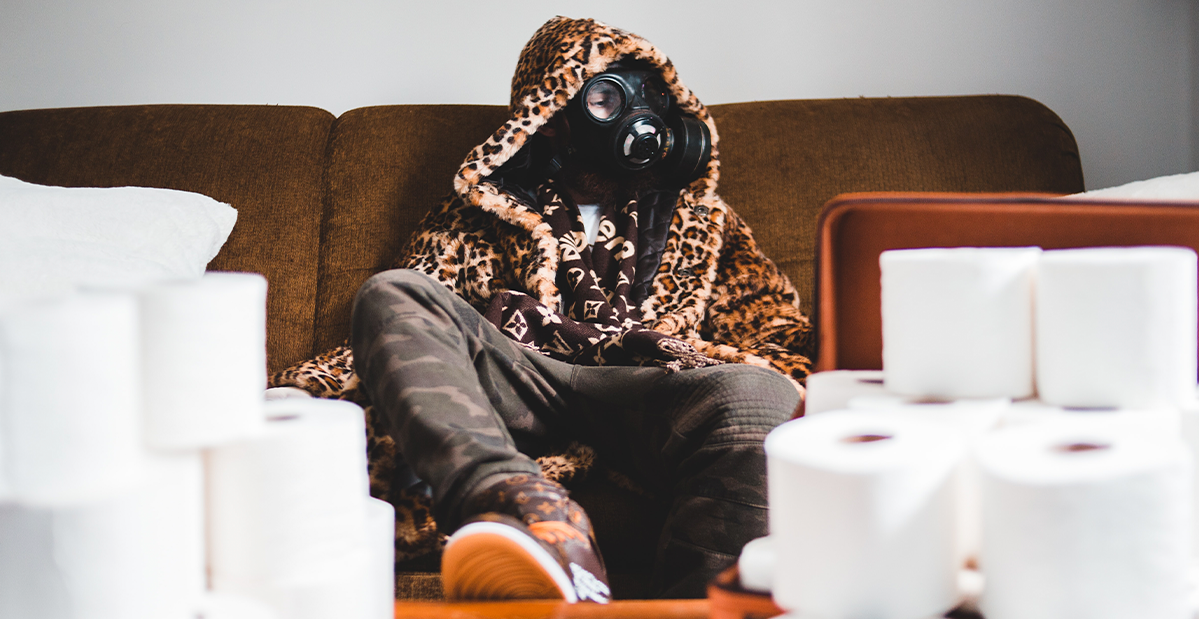

THE HEALTH CRISIS
COVID-19 is, first and foremost, a health crisis, and it is from this that all the other issues stem. As of June 29, 2020, the United States has the highest number of diagnosed cases of any country in the world, accounting for just over 25% of deaths worldwide. COVID-19 has hit this country very hard, with the epicenters moving and changing from one city (or state) to another over time. Thus far, the hardest-hit states have been California, Florida, Illinois, Pennsylvania, New Jersey, New York and Texas, with Arizona hot on their heels. Even now, infection numbers are still rising in many of these states.
The spread of this illness has been exacerbated by highly varied crisis responses. As public health is determined on a state-by-state level, there is not necessarily much regional cohesion, let alone national coordination. This has also meant that some states, like New York, are still upholding stay-at-home orders and keeping nonessential businesses fully or partially closed, while others, like Florida (which always had a comparatively lighter stay-at-home order), are now progressively reopening despite increases in cases. Some are now reversing these decisions; on June 26, Florida banned bars from selling alcohol to try to cut down on crowds, and it is closing its beaches once again.
“No incumbent with an approval rating below 48% has ever won their reelection campaign”
Although the national government has limited authority to directly govern states, many citizens have still felt a lack of leadership from the White House during this time, as can be seen in the current president’s job approval ratings. President Trump did see an increase in this approval in response to his initial handling of the crisis, rising to a high of 49% in late March, but it has since fallen to just 42.6% (Real Clear Politics average) or 41.0% (FiveThirtyEight adjusted average). These numbers are significant because no incumbent with an approval rating below 48% has ever won their reelection campaign. Reversing the tide this close to the election, while not impossible in these unprecedented times, will likely be challenging.
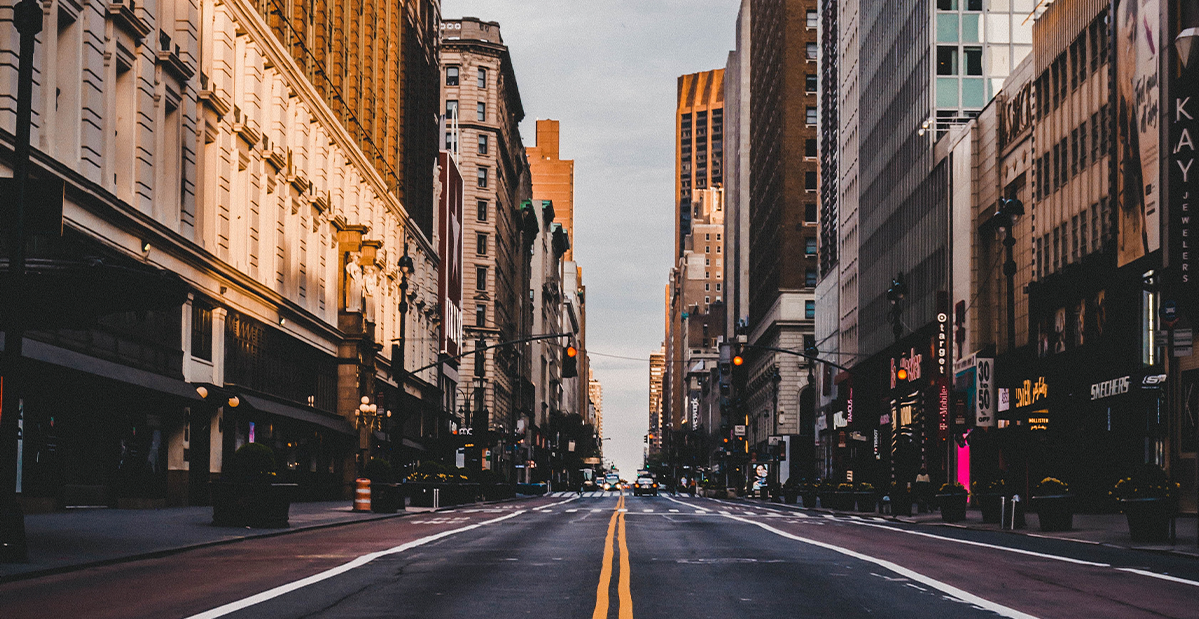
ECONOMIC IMPACT
In the three-month period between March and June, over 46 million U.S. citizens filed for unemployment insurance, equating to the highest rate of unemployment since the Great Depression. The situation has forced the administration to take action to provide relief, but many people are still struggling despite efforts such as the Coronavirus Aid Relief and Economic Security Act (CARES Act), which included sending citizens a one-time cash payment and economic loans to small businesses.
This has been further exacerbated by all the closures and stay-at-home orders from the first quarter, many of which are only now beginning to tentatively relax. People who cannot leave their homes are incapable of fueling the economy; the same is true of closed bars, restaurants, malls and shopping centers.
There was a push from the current administration to try to quickly reopen states – particularly swing states, where worsened economies are particularly dangerous for the incumbent president’s reelection. The goal behind Trump’s “LIBERATE MICHIGAN/MINNESOTA/VIRGINIA/WISCONSIN!” tweets (note, all swing states) was to encourage citizens there to put pressure on their governors to relax their stay-at-home orders, which would allow people to resume their normal commercial activities and, in turn, improve the local economies of these key areas.
“This is a disastrous situation for any incumbent president, but especially a Republican one, as the party´s promise is centered on maintaining a strong economy”
Overall, this is a disastrous situation for any incumbent president, but especially a Republican one, as the party’s promise is centered on maintaining a strong economy and helping those who want to work hold jobs. Indeed, one of President Trump’s largest campaign promises has centered on economic wellbeing, so this downturn is particularly threatening to his hopes for reelection.
The administration has begun working to combat this perception by both sharing numbers that suggest any type of economic recovery and taking a hard stance on immigration, which served as another key pillar in President Trump’s first presidential campaign. Not only is immigration an important issue for his voting base, but this time, his strategy will be to connect reducing immigration to protecting U.S. jobs – something many people are sensitive toward given the widespread unemployment. The administration’s hope is that this rhetoric will help the incumbent president in the lead-up to the election.
THE CAMPAIGN PROCESS
The way the campaign itself has taken place has, naturally, been impacted by this health crisis. In the past, presidential candidates have gone out into the country to hold rallies and share their ideas with the goal of convincing people to vote for them in the election – and given the importance of the swing states, much of the campaigning focuses on these areas. However, COVID-19 has fundamentally changed the way this can be done. Whereas past candidates have held rallies and other large in-person gatherings, the pandemic has greatly complicated this.
The incumbent president took a three-month hiatus on such gatherings due to the disease, but both he and his challenger have begun holding rallies this summer. There is no question that COVID-19 has changed them, however. Attendees to President Trump’s traditional, large-scale rallies are now required to waive liability for contracting the illness at the event, and Biden’s rallies invite nearly no voters and adhere to social distancing guidelines.
In this situation, the incumbent president potentially has an advantage, as he gives daily briefings from the White House that both share his position and keep him on the radar. The opposition candidate does not have the same opportunity to reach the people, which can be a disadvantage. Ironically, however, many of Trump’s public statements have not necessarily served him well, and the Biden campaign has apparently decided to keep a low profile for the democratic nominee, given the potential for missteps when speaking in public.
Furthermore, this reality has expanded the importance of digital channels to the campaign process, with social media platforms taking center stage. President Trump is famously fond of these options, particularly Twitter, whereas his opponent is not as familiar with their use. While this is certainly an advantage for President Trump, it is also true that citizens are less and less likely to trust what they see on these channels, and, following an altercation between the incumbent president and Twitter, the platform has begun tagging some of his tweets as being in violation of their terms and conditions, or possibly being “fake news.” This could potentially balance out the disparity between the candidates’ comfort levels with social media.
“This reality has expanded the importance of digital channels to the campaign process, with social media platforms taking center stage”
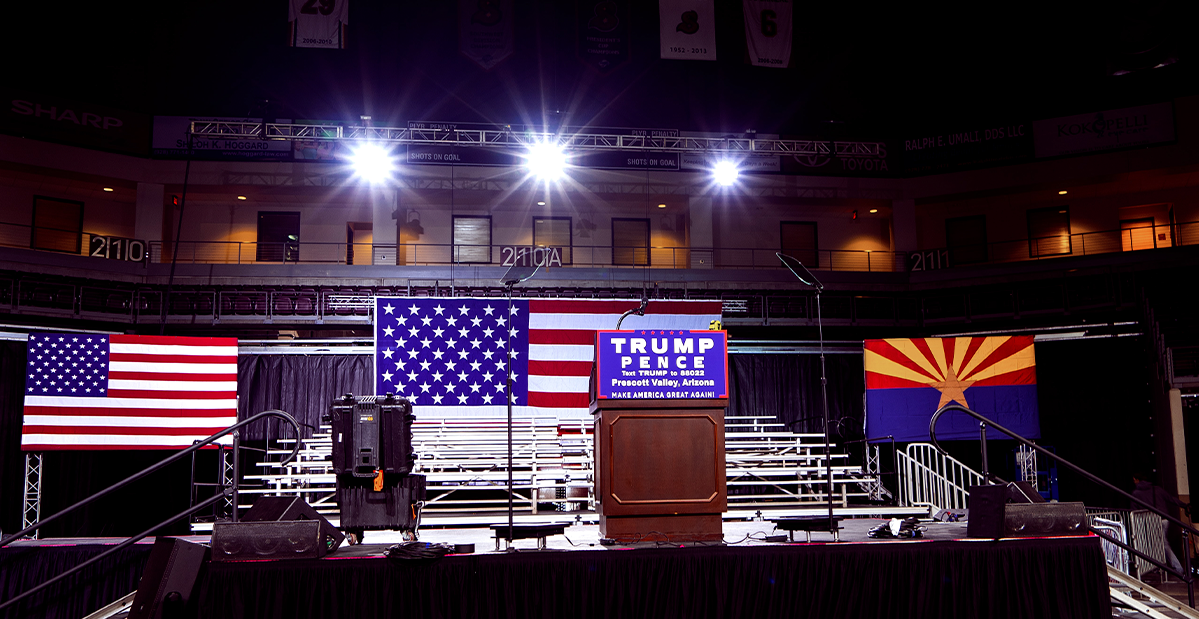
VOTING AND ELECTION DAY
COVID-19 has already impacted the primary elections (through which the final presidential candidates are chosen) in 15 states, including the swing states of Ohio and Pennsylvania. Some states have delayed their primaries, in some cases multiple times. Still others opted for mail-in voting.
This suggests potential turbulence for the November elections as well. There have already been discussions about conducting the November election entirely via mail-in ballot, a suggestion that the current administration has hotly decried. This is because nationwide mail-in voting would have a larger impact than it may initially appear.
Mail-in ballots would likely simplify the voting process, allowing people to vote even if they are working, sick, busy or unable to locate a polling location near them – all reasons that may prevent someone from easily casting their ballot. This is significant because, broadly speaking, smaller voting pools tend to be better for Republicans (such as the incumbent president) and larger voting pools for Democrats. Mail-in voting would, therefore, likely favor the opposition. From this perspective, the current administration’s resistance is understandable.
However, there would be significant health concerns surrounding in-person voting, assuming the COVID-19 pandemic has not been halted by November. Given this, roughly half of Republican voters support mail-in ballots for this election.
There is nothing novel about mail-in ballots, which is why so many states have been able to conduct their primaries using this channel, but policies for accessing a mail-in ballot vary widely from state to state. Currently, only five states automatically send all voters mail-in ballots, including the swing state of Colorado. A total of 29 other states require voters to request a mail-in ballot, but they do not need an excuse to do so. These include all the other swing states except New Hampshire, where voters must provide a reason for requesting to vote in this manner.
In the end, which states offer mail-in ballots and how they choose to do so will ultimately be a decision each state will make individually, but it is a highly important question that the current administration will be watching closely.

SOCIAL UNREST
The recent social upheaval, while sparked by the murder of George Floyd at the hands of police officers in Minneapolis, Minnesota (a swing state), cannot be entirely divorced from the backdrop of the COVID-19 pandemic. Racial injustice and police brutality have been heated, ongoing topics of conversation in the United States for some time, but it has not resulted in such a widespread or passionate response in decades; Black Lives Matter protests have taken place in all 50 states and are still continuing. Though COVID-19 is not entirely responsible for this level of reaction, the pandemic and its accompanying realities certainly contributed.
First, evidence suggests that certain ethnic groups are more strongly impacted by COVID-19 than others, specifically Black people (92.3 deaths per 100,000 population) and Hispanic people (74.3 deaths per 100,000 population). White Americans, meanwhile, have only 45.2 deaths per 100,000 population, with Asian Americans standing at just 34.5 deaths per 100,000 population.
While there are many possible factors behind this, ranging from living situations to working circumstances to cultural attitudes, the fact of the matter is simple: Proportionally more Black Americans have died from COVID-19 than any other race. This means news of George Floyd’s death came at what was, for many in the community, already a time of sorrow and anger. This, alongside the natural frustrations arising from being kept indoors for weeks on end, cannot be ignored when considering why this explosion of protesting, and some looting, has happened now.
These peaceful protests and demonstrations are not good for the Republican administration, as they center on the traditionally Democratic realm social justice. However, many democrats are questioning why presumptive nominee Biden has not yet come out with a strong statement in favor of the Black Lives Matter movement, given the strong support he has enjoyed from the Black vote in the primary elections thus far. Meanwhile, the flareups of riots and lootings have helped justify incumbent President Trump’s “law & order” stance, which centers on support for law enforcement.
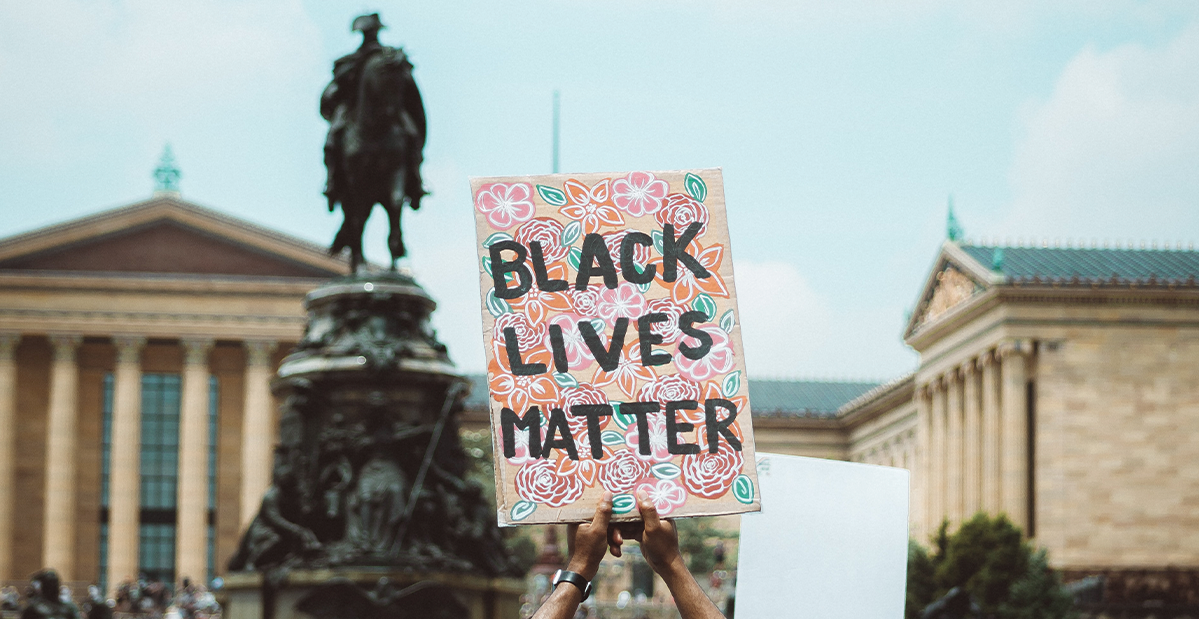
CONCLUSIONS
Neither of the two presumed candidates facing the November election can claim to have handled the COVID-19 crisis and all its related concerns particularly well. Trump and Biden must both face the electorate at a time of unprecedented economic, health and social difficulty.
On one hand, after almost four years of the incumbent president’s administration and on the eve of the election, he has currently lost his most powerful argument – that under his presidency, the economy has thrived. While this might have been true before the COVID-19 crisis, the nation is now facing economic stagnation and the end of state of welfare. Despite the massive amounts of money, the national government has pumped into the business ecosystem, social unrest and fear of the coronavirus among citizens remain. In order for him to have a chance at being reelected, the electorate must see that the country is on a clear path toward recovery by election day – or even before then, if most people end up voting by mail.
On the other hand, Biden has been rather silent concerning many issues relevant to U.S. society at this crucial time. Though all the other Democratic candidates have given Biden their endorsements, this does not guarantee he will be able to hold onto all his competitors’ votes in the primaries. For example, many of Bernie Sanders’ supporters are young liberals, and Biden will have to win over this portion of the demographic even though many of these young citizens consider his positions and priorities not sufficiently left-leaning. He will have to earn their votes without jeopardizing the support of voters from the centrist democratic electorate that have carried him this far, as well as other undecided voters. The democratic campaign is also counting on the many unenthusiastic voters in this election season, hoping they will cast their votes for Biden simply as a rejection of President Trump.
All in all, both candidates still have a long way to go before either can become the next president of the United States. The battle for the swing states will be fierce, and now more than ever, the issues of economics, healthcare and social justice, all touched by the COVID-19 crisis, will be fundamentally woven into the political landscape the two candidates will have to traverse in the lead-up to November.
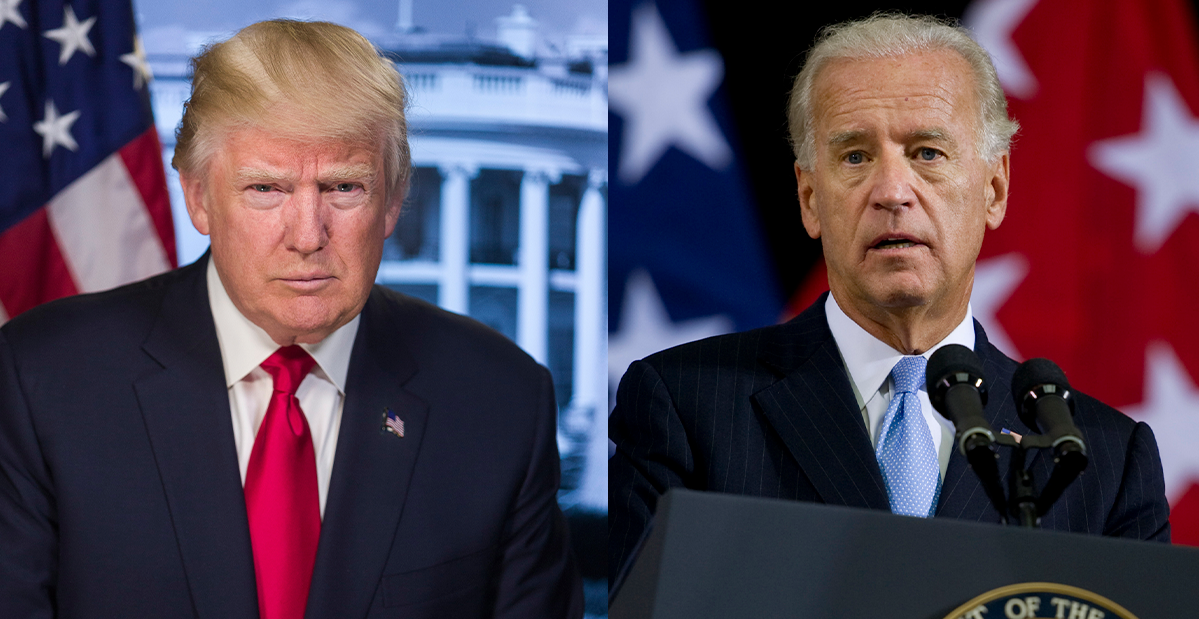
“Neither of the two presumed candidates facing the November election can claim to have handled the COVID-19 crisis and all its related concerns particularly well”
Authors
Carlos Correcha-Price
Khy Labri



